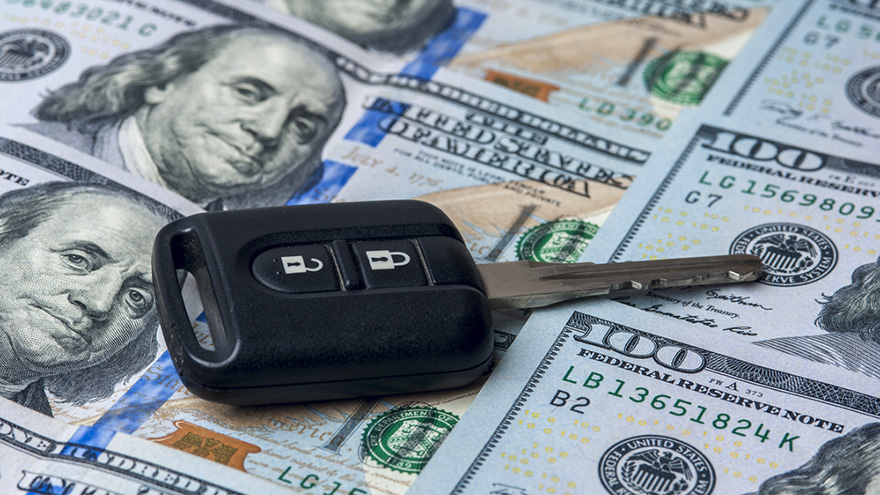New York Fed puts 7M auto delinquencies in context

By subscribing, you agree to receive communications from Auto Remarketing and our partners in accordance with our Privacy Policy. We may share your information with select partners and sponsors who may contact you about their products and services. You may unsubscribe at any time.
NEW YORK –
A quartet of analysts took a deep look at the auto finance data after the Federal Reserve Bank of New York’s Center for Microeconomic Data released its Quarterly Report on household debt and credit on Tuesday.
At first blush, it might look inflammatory that the New York Fed data fueled by Equifax showed that more than 7 million people had an auto finance contract at least 90 days delinquent by the time 2018 finished. However, the data set also pointed out that more than 89 million people have some form of auto financing — a lease or retail installment contract. That’s the highest figure ever recorded, according to the Fed data from Equifax that goes back to 1999.
All told, auto financing surged by $53 billion year-over-year to close 2018 at $1.27 trillion; again the highest figure ever recorded.
While perhaps collection departments, forwarding companies and repossession agents will see a surge of activity this year, New York Fed experts offered some clarity. Andrew Haughwout, Donghoon Lee, Joelle Scally and Wilbert van der Klaauw collaborated on the Federal Reserve Bank of New York Liberty Street Economics blog for a post titled, “Just Released: Auto Loans in High Gear.”
They wrote, “After years of growth among borrowers across the credit score spectrum, 2018’s strength in auto loans was primarily driven by those originated by the most creditworthy individuals, while originations to those with scores below 720 have leveled off, albeit at high volumes. The high volume of prime originations has caused a quality-shift in the outstanding pool of auto loans and, as of the fourth quarter of 2018, 30 percent of the $1.27 trillion in outstanding debt was originated to borrowers with credit scores over 760.
“Meanwhile, the share of total auto loans outstanding that was originated to subprime borrowers fell to 22 percent. In fact, these percentages would suggest that the overall auto loan stock is the highest quality that we have observed since our data began in 2000,” they continued.
Subscribe to Auto Remarketing to stay informed and stay ahead.
By subscribing, you agree to receive communications from Auto Remarketing and our partners in accordance with our Privacy Policy. We may share your information with select partners and sponsors who may contact you about their products and services. You may unsubscribe at any time.
“However, with growth in auto loan participation, there are now more subprime auto loan borrowers than ever, and thus a larger group of borrowers at high risk of delinquency,” the experts went on to say.
The report went on to mention that auto financing is just part of what’s pushing overall debt to new highs.
The report showed that total household debt increased by $32 billion (0.2 percent) to $13.54 trillion in the fourth quarter of 2018. It was the 18th consecutive quarter with an increase, and the total is now $869 billion higher than the previous peak of $12.68 trillion in the third quarter of 2008.
Furthermore, analysts found overall household debt is now 21.4 percent above the post-financial-crisis trough reached during the second quarter of 2013.
The report is based on data from the New York Fed’s Consumer Credit Panel, a nationally representative sample of individual- and household-level debt and credit records drawn from anonymized Equifax credit data.
Haughwout, Lee, Scally and van der Klaauw acknowledged that auto finance delinquency rate of 2.36 percent as of the end of 2018 is much higher than the reading of 1.5 percent seen in 2012. But they also viewed it in the context of how many vehicles have rolled over the curb, filling finance company portfolios during that span.
“The surging auto loan industry has been on our radar for more than five years now. But, the level of loan originations has been commensurate with auto sales, with a steady 50 to 60 percent financing share of combined new and used vehicle purchases — a percentage surprisingly stable in our sample period, which suggests that car loans have been tracking the growth seen in motor vehicle sales,” they wrote in the blog.
“Although rising overall delinquency rates remain below 2010 peak levels, there were over 7 million Americans with auto loans that were 90 or more days delinquent at the end of 2018. That is more than a million more troubled borrowers than there had been at the end of 2010 when the overall delinquency rates were at their worst since auto loans are now more prevalent,” they continued.
“The substantial and growing number of distressed borrowers suggests that not all Americans have benefitted from the strong labor market and warrants continued monitoring and analysis of this sector,” they concluded.


